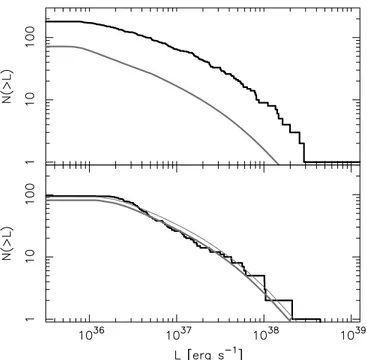Luminosity functions of LMXBs in centaurus a : globular clusters versus the field
Texto completo
Figure



Documento similar
A comprehensive study of bright compact knots (most of them apparent associations of clusters) in a representative sample of 32 (U)LIRGs as a function of infrared luminosity
The sign of this slope is in agreement with theoretical expectations (Duffy et al. Concentrations and masses from CLASH. The color of data points and lines encodes the redshift of
Next we study the evolution of the total mass density profiles of the main galaxy clusters in the dataset to find how stable is their mass distribution across their
Measuring the concentration–mass relation and its redshift evolution in a subsample of MUSIC-2 halos that reproduces the distribution of X-ray regularity parameters of the clusters
The time selection for the following sources is based entirely on their X-ray behaviour, by taking into account the disk-jet coupling just described. Only periods of hard X-ray
• Analysis of long-term variability of high-energy sources in the optical and X-ray bands, using INTEGRAL observations from IBIS (the gamma-ray imager), JEM-X (the X-ray monitor)
The luminosity function of the former method is derived by summing membership probabilities of all stars fitted to distribution functions in the vector point diagram, whereas
- a propeller model (with a fraction of the mass accreted) accounts for the bolometric high energy luminosity and qualitatively explains the radio and the gamma-ray emission;. -